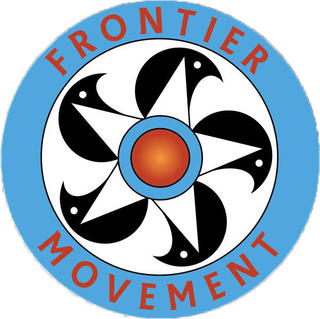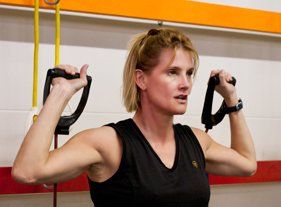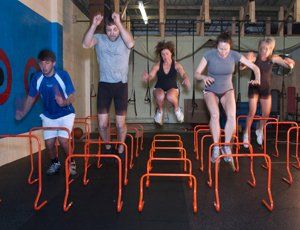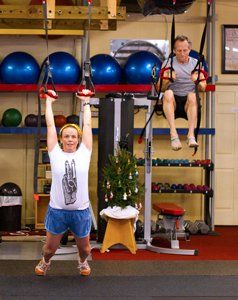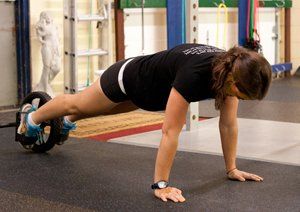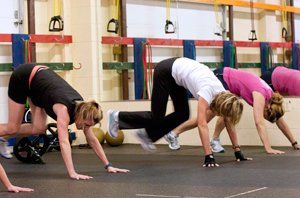Weight Loss - Exercise
- By Chris Hardwicke
- •
- 01 Jul, 2018
- •
Exercise for weight loss
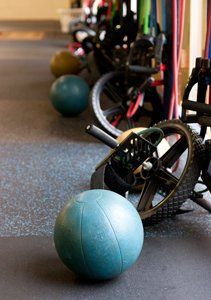
Exercise is what I sell for a living. I would go crazy without it and so would everyone around me. Intense exercise keeps you young. Exercise makes the heart and lungs strong and lowers your blood pressure. Exercise helps you sleep. It gives you strong bones and muscles. Intense exercise delivers a potent natural high. But exercise doesn’t help much with our spare tire. I am not saying that exercise does nothing for weight loss, but we ADAPT so quickly to exercise that it is not a good weight loss tool.
I shall first deal with the myth of “spot reduction.” This is the concept of targeting your exercise directly to the area where the fat is stored. Examples would be cycling for the thighs or crunches for the tummy. As most of you know, this does not work.
If you do a lot of crunches WITHOUT changing your diet your stomach will not get smaller. You will be able to feel your “six pack” under your “keg” within weeks. That’s right; weeks are all that it takes to have great abs. Too bad you can’t see them! They are under your body fat and if you have not changed the way you eat, you will likely be even bigger around your middle as you now have the fat AND the muscle on your tummy.
Body fat will leave your body in the reverse order in which you gained it, period. Last in— first out. You would do well to think of your body as a storage unit. If you put the bed in first, it’s not coming out till you remove the dining room table.
As for cardio, I have looked at many cardio clinical trials attempting to use elevated heart rate exercise for weight loss and the results are ALWAYS poor. Sometimes the participants actually gain weight! A close look at these trials will reveal that ADAPTATION is the culprit.
Exercise protocols are governed by the FIT principle. The “F” stands for frequency or how often we exercise. The “I” stands for intensity or how hard we exercise. This is usually quantified in MPH or miles per hour. The “T” represents time or how long we perform the exercise.
Let’s take a typical trial format using “brisk walking” as the exercise. Subjects are instructed not to change their diet. The FIT protocol will be as follows; the sedentary subjects will walk for one hour (T), at 5 MPH (I), 5 days per week (F). As the subjects begin the trial they are struggling with the exercise. Their walking muscles and lungs are weak, their heart muscle is small and they are carrying extra weight. They have no ADAPTATION to brisk walking.
In the first month they might typically lose a pound and a half. This may continue for another month or even two. Then weight loss begins to slow. All the relevant muscles have become stronger and more efficient. The heart is bigger and moves blood more efficiently. The subjects are ADAPTING.
In a few more months weight loss will stop. Then to the surprise of everyone (over and over) weight gain slowly begins! These trials are usually 18 months long owing to the nature of graduate programs and often this is long enough for a net zero weight loss to occur. Many times, upon seeing little or no loss, the grad students re-title their study “weight maintenance.”
After observing longer trials, some unscrupulous exercise proponents have authorized shorter clinical trials that end while subjects are still losing weight or they simply cite results from the first half a clinical trial, ignoring the bad results later as ADAPTATION spoiled their fun. This is why you likely believe that exercise is much more effective for weight loss than it really is.
After years of disagreement from mainstream health ‘experts”, some are beginning to admit the futility of exercise for weight loss. In August 2009, Time magazine ran the cover story “The Myth About Exercise. Of Course It’s Good For You, But It Won’t Make You Lose weight.”
In a fight or flight, hunting and gathering species, efficient use and conservation of energy is a top priority. When weight loss as a result of exercise stops (we adapt), we must alter our FIT parameters to re-stimulate weight loss and thereby lose our adaptation. If we exercise more often (F), longer (T), or faster (I) we will shake off our adaptation and weight loss will resume. Until we adapt. Eventually we run into the previously discussed Sustainability problem.
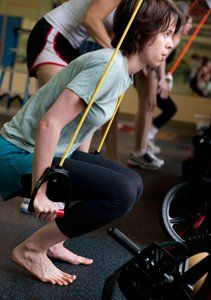
We are fight or flight, hunting and gathering animals. In our DNA are all the tools for energy creation. Through the Kreb’s cycle, we can convert ALL food to energy. We can live in excess of 40 days on water alone. We can walk 300 miles without anything other than water. Though it is occasionally not evident, we are the most highly evolved animals on Earth.
To better understand how we create more energy, we would do well to visualize a spiral. If we follow the line of the spiral we see that it moves up and then levels out, reaching an ever-increasing height. The same is true when we create energy. Our energy levels cannot simply rise straight up. We must also level out to create energy (rest).
If you have been sedentary for a long time and one day you decide to go jogging for a couple of miles, you will be tired for several days after. You will need to rest. Tiredness is the downside of the spiral. From just that one run, you have created more energy that is yours to use AFTER recovery. This increased energy is the upswing of the spiral. If you continue to run and rest, the spiral will go up and level out with the net result being a gain in energy. Our heart becomes bigger and our lungs more toned, the relevant jogging muscles are stronger and more efficient.
To return to our car analogy, our engine has become bigger and stronger. When running a couple of miles no longer challenges us we have ADAPTED to our running regimen. At this point, if we do not run faster, farther or longer we will not continue to increase our energy. Our current level of running will MAINTAIN our current level of ADAPTATION (energy level). If we stop running we will gradually go back down the spiral. If we do not allow for full recovery through proper sleep we will also see a drop in performance. Sleep is an important part of the leveling out of the spiral.
In a nutshell, we must work hard enough to go higher “up” the spiral, and then rest, through which we will adapt to higher and higher levels of energy.
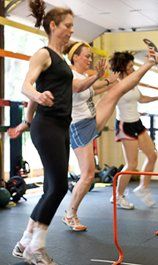
You can feed all the fuel you want to a weak engine and it will still not go faster. You can cleanse the fuel lines all you want and you will not increase YOUR performance if your engine is small and weak.
We have total control of our energy level. We are responsible for creating our own energy. If you do not have any, you have created the weak engine I am talking about. It is very easy to look to cleanses and supplements, but a strong engine can run very well for a long time on junk food, much as putting cheap gas in your car often takes 100,000 miles to have a negative effect.
In our car analogy, we fixed everything but the engine and still we had no better performance. A big difference between human engines and car engines is that if you park your car in the garage for a few years, the engine remains just as powerful. The human engine, however, will actually shrink. Your entire system can get clogged by parking it on the couch too long and not taking it out for a good drive once in a while. If you only drive it to work and back it won’t continue to run well for long. You will see what I mean when you finally “floor it” and black smoke pours out of the exhaust! It may even stall! Quick, before it’s too late, let’s make this thing run right, faster, and longer.
Why don’t you have some coffee, sugar, or fruit? That ought to pick you up! How about an energy drink with some wild sounding jungle herbs? Most of us regularly look for energy in a particular food or drink and we are eventually forced to acknowledge that it does not work.
We have an epidemic of blood sugar problems (hypoglycemia) that affect an estimated 60% of this country. In fact, most companies give workers a break at 10 a.m. and often this is not because they are generous, but productivity has markedly slowed. At this point you have only been at work for two, at most three, hours! Certainly you are not already out of energy. Notice that your break room is filled with caffeine, candy, and salty and sweet carbohydrates in hopes of kicking you back into productivity.
Further notice that the great ‘medication stations”—convenience stores— that are filled from one end to the other with these items! I can fix your “Blood Sugar” problem such that you can fully access energy you already have, but that will NOT create more!
Many alternative modalities promise to remove “blocks” to your energy or increase the flow of energy. Often “cleansing” of some type is recommended. Notice that removing blocks and increasing FLOW are NOT the same as creating MORE energy. For a better understanding of energy, I shall use a car for my analogy.
Let’s say that the tube that carries gasoline to the engine (the fuel line) is clogged. The car runs poorly. When you clear the “blockage” you “increase the flow” of fuel to the engine. While this is important and I often recommend energy-flow work, you will NOT have MORE energy, but full access to the energy you already had.
How about if the carburetor is not mixing the air and gasoline correctly? Again the car runs poorly. Many vitamin and supplements companies make “increased-energy” claims based on improving your fuel mix. While supplements and diet can sometimes correct nutritional deficiencies, you will only have better fuel, not more fuel. This is very important as better fuel is necessary for high performance. Many people in third world countries suffer from malnutrition and cannot perform well. However, you and I are likely getting everything we need for our day-to-day performance and even our “weekend warrior” athletics. Body builders, high school, college and professional athletes may well need supplements if their diet is less than perfect but I’m willing to bet that quality fuel is not your problem.
For now, let’s assume that your fuel system is clean enough and you eat a good enough diet. If this is the case, and most often it is, the cause of your lack of energy is that your motor is small and inefficient and that nothing you put in the gas tank can change that!
